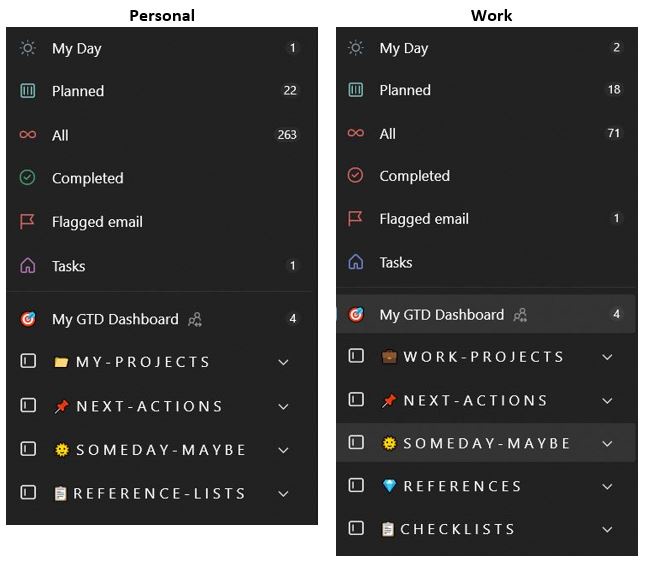Changing times and tastes
I’ve been having moments of deep reflection in the past few weeks. Maybe even the past couple of months. I got an urge to reinforce the simplicity principles that have lead me to where I am right now.
I noticed at first that I wanted a simpler process to organize my thoughts, ideas and actions. I always write about the GTD method and how it’s been an excellent tool for me. The interesting thing about GTD is that you can make it as simple or as complex as you need. Right now I need simple. So I’ve been experimenting with MS To Do with the very basic GTD setup, just contexts lists, no linking to projects, and I noticed less effort from my part to keep the system current.
Then my dad passed away recently, and that was a traumatic experience. It was hard because I’m far away, and I’m in the middle of waiting for my new passport to be able to travel. That will happen in a couple of weeks, fingers crossed. I’ve been journaling privately a lot, trying to process the grief and working towards acceptance. Grieving can give us a whole new life perspective, on the things that really matter. And that all comes back to what I was talking in the beginning: simplicity. Enjoying the simple things in life, and also having a simple life, with less stress. I’ve been prioritizing meditation, yoga and walks with my partner. I’m taking care of my diet and my sleep. Those are fundamental things.
My reading taste has been changing as well. I’m in a phase where I want to read stories about people, but I still prefer fantasy or sci-fi settings. I’ve just finished the fifth book of the “Parasol Protectorate” series by Gail Carriger and it was such a delight! It’s steampunk, Victorian inspired, funny, witty and super relaxing for me. After finishing it I continued on to Gail Carriger’s other series “The Custard Protocol”, which is the same setting, with the daughter of the protagonist of the “Parasol Protectorate”. That’s what I need right now: something fun and smart, with not too many high stakes and some sensibility in it. I’ll probably be reading more romance-like books in the future. It’s one of those phases.
Thoughts? Discuss... if you have a Write.as account or Reply by email
By Noisy Deadlines Minimalist in progress, nerdy, introvert, skeptic. I don't leave without my e-reader.






